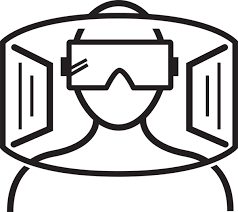July 2nd, 2020
Category: Innovation
No Comments
Posted by: Team TA

COVID-19 has demonstrated the importance of digital readiness, which allows businesses and human lives to continue as usual during pandemics. Building the required infrastructure to support a digitized world and stay current within the latest technology is going to be essential for any business or country to stay competitive during a post-COVID-19 world.
COVID19 pandemic is the ultimate catalyst for digital transformation and can greatly accelerate several major trends that were already well underway before the pandemic. The COVID-19 pandemic will have an enduring effect not only on our economy, but on how we set about our daily lives, and things aren’t likely to return to pre-pandemic norms. While this pandemic has forced many businesses to reduce or suspend operations, affecting their bottom line, it has helped to accelerate the development of several emerging technologies.
This is very true for innovations that reduce human-to-human contact, automate processes, and increase productivity amid social distancing. The following technologies are poised to grow in popularity in a post COVID19 world:
- 5G Networks
5G is being acknowledged as the way forward for communication and therefore the leading edge for the whole mobile industry. Deployment of 5G networks will emerge between 2020 and 2030, making possible zero-distance connectivity between people and connected machines. This type of mobile internet connectivity will provide us super-fast download and upload speeds (five times faster than 4G capabilities) as well as more stable connections.
The industry buzz surrounding 5G technology and its impact on the next-generation of connectivity and services has been circulating over the last year approximately. Yet, the technology still isn’t widely available and it holds the potential to revolutionize the way mobile networks function, because of COVID-19, the 5G market may materialize sooner than expected. As large numbers of individuals are forced to isolate, a rise in working and studying from home has been stressing networks and creating higher demand for bandwidth. People have now realized the necessity for faster data sharing with increased connectivity speeds, an acceleration within the rollout of 5G technology to make sure the bandwidth and capacity challenges of existing infrastructure is more real than ever.
- Artificial Intelligence (AI)
By 2030 AI products will contribute more than $15.7 trillion to the global economy. A number of technological innovations like intelligent processing, and face and speech recognition became possible thanks to AI.
Post-COVID-19, consumer behaviors won’t go back to pre-pandemic norms. Consumers will purchase more goods and services online, and increasing numbers of people will work remotely. As companies begin to navigate the post-COVID-19 world as economies slowly begin to reopen, the application of AI is going to be extremely valuable in helping them adapt to these new trends.
- Cloud Computing
Cloud companies are weathering the pandemic stress-test caused by the sudden spike in workloads and waves of new, inexperienced users. Microsoft reports a 775% spike in cloud services since the COVID-19 lockdown restrictions imposed globally. In the post-COVID-19 world, cloud technology is likely to receive a surge in implementation across all types of apps.
As the virus spread, people were forced to work from home (WFH) and online learning models were implemented, the demand for cloud-based video conferencing and teaching has skyrocketed. Various cloud service vendors have actively upgraded their functions and provided resources to meet this demand. Moving forward, businesses and educational institutions are likely to continue to make use of this technology. As demand for this technology continues to grow, implementation of this technology into mobile applications for easier access is going to be the key.
- VR/AR
This pandemic increased the number of people using VR headsets to play video games, explore virtual travel destinations and partake in online entertainment, as they isolate at home, they’re also using this technology to hunt human interaction through social VR platforms.
Businesses have also been experimenting with VR platforms to train employees, hold conferences, collaborate on projects, and connect employees virtually. Businesses and consumers are now aware of the extent to which this technology can be used, we are likely to see more virtual conferences and human interactions as our new normal sets in.
- Internet of Things (IoT)
IoT will enable us to predict and treat health issues in people even before any symptoms appear, with smart medication containers, IP for each vital a part of your body for the doctor to hack. to smart forks that tell us if the food is healthy or not. Personalized approaches concerning prescribing medicines and applying treatments will appear (also referred to as precision medicine). In 2019 there were about 26 billion IoT devices and it’s estimated by statista.com that their number will increase to 30.73 billion in 2020 and to 75.44 billion in 2025. The market price is about $ 150 billion with estimated 15 IoT devices for an individual within the US by 2030.
IoT also fuels edge computing, thus data storage and computation become closer to the points of action, enabling saves in bandwidth and low latency. IoT will transform the user experience profoundly, providing opportunities that weren’t possible before. Gaining this experience may be forced by the pandemic when people are spending almost all their time at home. IoT devices, that make life quality better and lifestyle easier can become quite trendy. For example, telemedicine and IoT devices helping to monitor people’s health indicators may increase their popularity.
- Cybersecurity
Cybersecurity is among the vital technologies for organizations, especially whose business processes are supported by data-driven technologies. Much more attention is being paid to privacy and data protection since the European Union’s General Data Protection Regulations (GDPR) has been signed and recently CCPA in California.
During the COVID19 pandemic lock-down, when thousands of people are forced to work remotely, volumes of private data may have become totally vulnerable or at least not protected in a proper way. This emerging challenge may give another incentive for the implementation of cybersecurity practices. Cybercriminals took advantage of the fear factor of this virus to send their own viruses – phishing emails promising virus protection kits and even info about canceled summer Olympic games. In addition, there is an increase in ransomware attacks on health institutions and even hacking of research centers to steal any info about possible vaccine of COVID19.
The above-mentioned are the leading technologies that have already found/will find a strong foothold post-COVID19 times. A few others such as blockchain, robotics, voice-controlled user-interfaces, applications of GIS are also poised to be the game-changers in the coming days.





